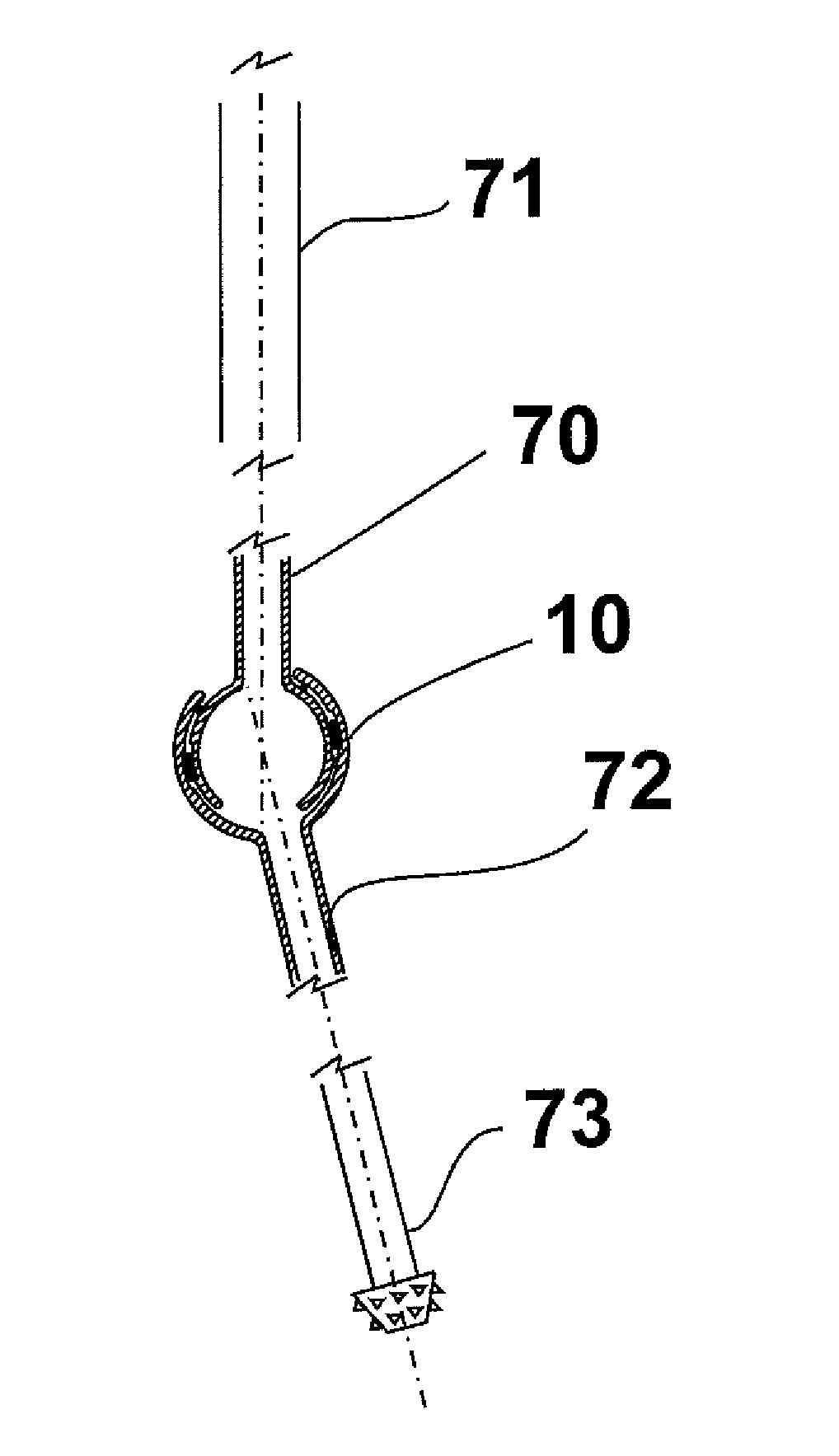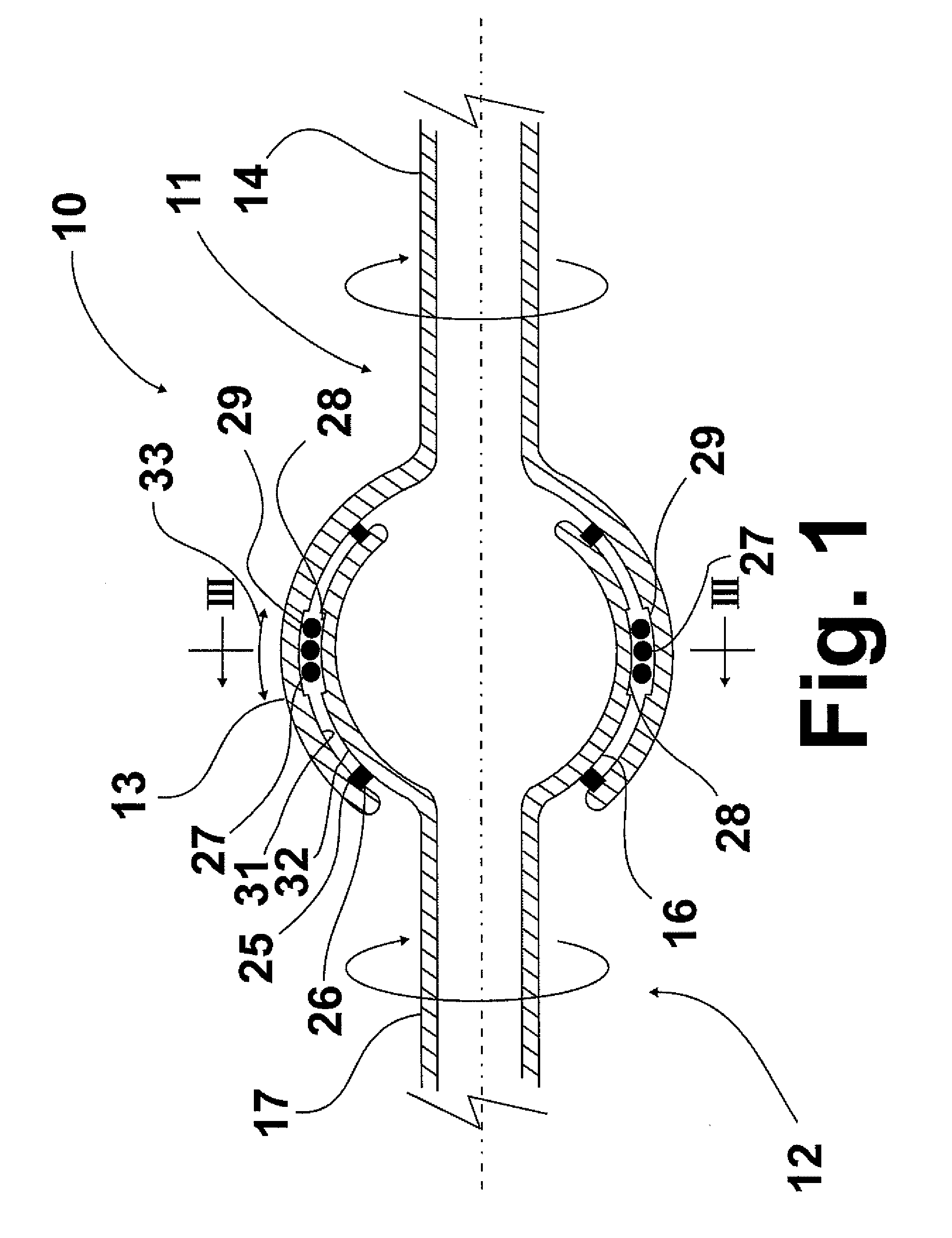Rotary joint for subterranean drilling
a rotary joint and subterranean drilling technology, applied in the direction of couplings, mechanical equipment, borehole/well accessories, etc., can solve the problems of difficult sealing of the inside and outside of the shaft, difficult to provide smooth and uniform transfer of rotational speed and torque, bulky universal joints, etc., to reduce the resistance to fluid flow, reduce rotational friction, and smooth transfer of rotational energy and torqu
- Summary
- Abstract
- Description
- Claims
- Application Information
AI Technical Summary
Benefits of technology
Problems solved by technology
Method used
Image
Examples
Embodiment Construction
[0023]FIG. 1 shows a rotary joint 10 for a rotary steerable drilling system in accordance with one embodiment of this invention. As a component of a rotary steerable drilling system as shown in FIG. 9, one end of the rotary joint (the drill string end 70) is connected with a drill string 71 and the other end (the drill bit end 72) is connected with a downhole assembly, which includes a rotary drill bit 73. The rotary joint comprises two rotatably joined rotary joint components, a first rotary joint component 11 having a first spherical-shaped socket 13 fixedly connected with a first hollow rod 14, and having a first longitudinal axis 15 (FIG. 2), and a second rotary joint component 12 having a second spherical-shaped socket 16 disposed inside the first spherical-shaped socket fixedly connected with a second hollow rod 17, and having a second longitudinal axis 18 (FIG. 2). FIG. 2 shows an angled disposition of the rotary joint of this invention resulting from a rotary movement of the...
PUM
 Login to View More
Login to View More Abstract
Description
Claims
Application Information
 Login to View More
Login to View More - R&D
- Intellectual Property
- Life Sciences
- Materials
- Tech Scout
- Unparalleled Data Quality
- Higher Quality Content
- 60% Fewer Hallucinations
Browse by: Latest US Patents, China's latest patents, Technical Efficacy Thesaurus, Application Domain, Technology Topic, Popular Technical Reports.
© 2025 PatSnap. All rights reserved.Legal|Privacy policy|Modern Slavery Act Transparency Statement|Sitemap|About US| Contact US: help@patsnap.com



